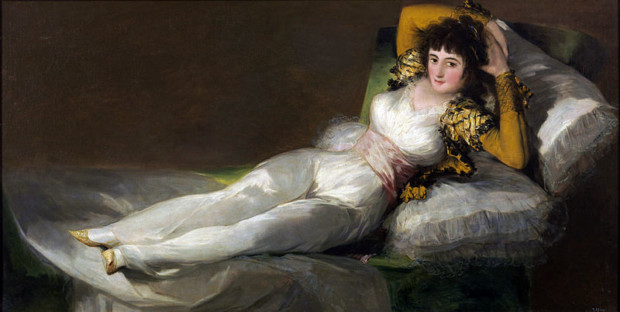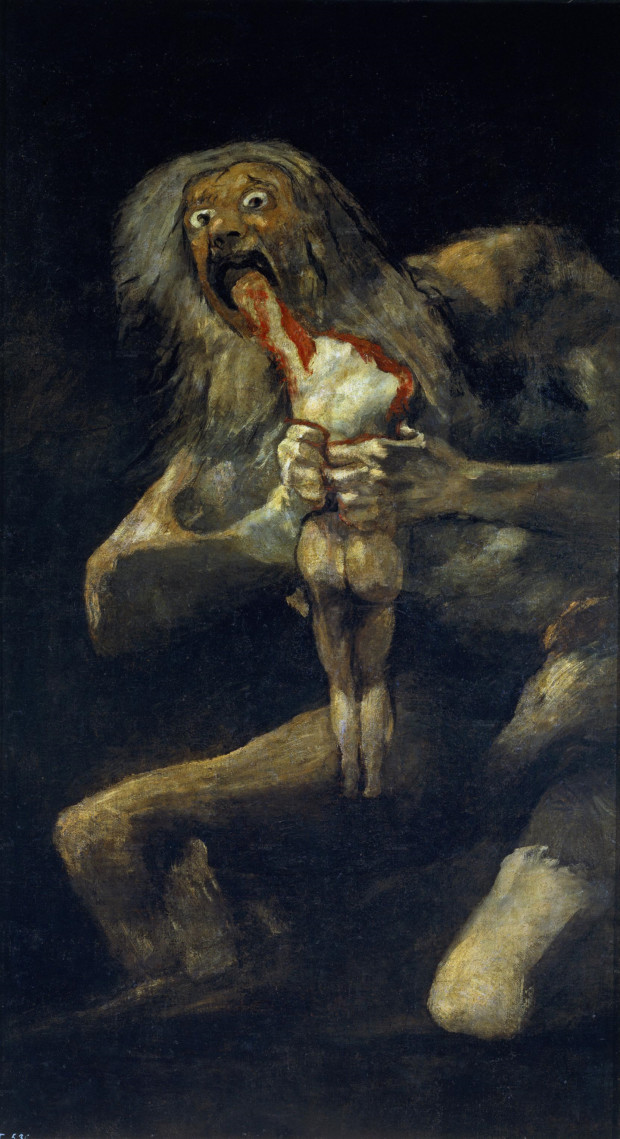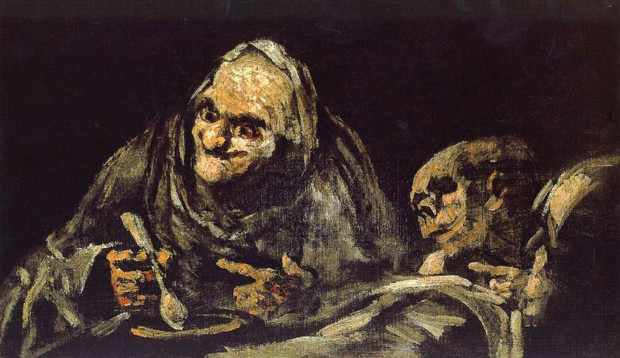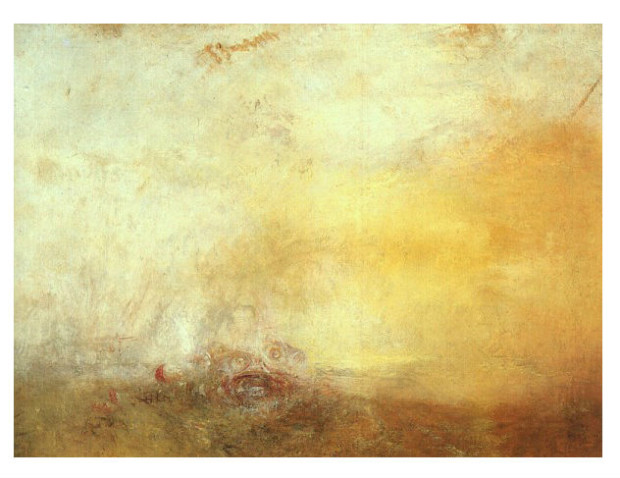Celebrating M. F. Husain—One of India’s Most Iconic Artists
Maqbool Fida Husain’s artwork exudes a timeless quality that bridges the past and the present. His forms honor sacred traditions while also...
Guest Profile 2 October 2024
Renowned as one of the most influential Spanish artists, Francisco Goya’s artistic prowess continues to bewitch and intrigue art enthusiasts and scholars alike. Yet, despite his fame, the question lingers: What title befits this artist? Delving into the depths of Goya’s life, art, and the tumultuous era in which he thrived, we want to shed light on the multifaceted nature of this extraordinary painter and unveil the layers of mystery surrounding his artistic legacy.

In Portrait of Charles IV, the artist captures the regal presence of the Spanish monarch. Goya’s masterful brushwork and acute attention to detail bring forth the commanding figure of King Charles IV, depicted in full regalia with an air of solemnity. The richly adorned attire and meticulously rendered facial features highlight the artist’s ability to capture the essence and character of his subjects. Through this portrait, Goya showcases his technical expertise and artistic prowess while providing a glimpse into the royal splendor and grandeur of the era.

This painting presents a haunting and enigmatic scene. In this composition, Goya explores the theme of the human condition with a touch of ambiguity. The painting depicts a group of individuals engaged in a game of Blind Man’s Buff, where one person is blindfolded and attempts to catch the others. Goya’s skilled use of light and shadow, combined with his expressive brushwork, creates an atmosphere of mystery and tension. The figures’ distorted and contorted poses, along with their obscured faces, evoke a sense of uncertainty and unease. Blind Man’s Buff is a thought-provoking work that invites viewers to contemplate the complexities of human interaction, vulnerability, and the unknowable aspects of life.

Goya’s The Third of May, 1808 is a powerful depiction of a tragic event in Spanish history. Painted in 1814, the artwork portrays the execution of Spanish civilians by French soldiers during the Peninsular War. Goya’s use of stark contrast between light and dark, along with his bold brushwork, intensifies the emotional impact of the scene.
The central figure, with arms outstretched in a Christ-like pose, represents the innocent victim facing his imminent demise. The vivid portrayal of despair, fear, and brutality elicits a visceral response from viewers, evoking a profound reflection on the horrors of war and the sacrifice of ordinary people caught in its grip. The Third of May, 1808 stands as a timeless testament to Goya’s artistic genius and his ability to capture the raw emotions and harsh realities of human existence.

Portrait of the Duchess of Alba is an enigmatic painting that showcases the artist’s skill in capturing his subject’s charisma and allure. With vibrant colors and intricate details, Goya portrays the Duchess of Alba, emphasizing her confident stance and distinctive presence. The painting’s symbolism and the artist’s exceptional brushwork leave viewers intrigued by the Duchess’s captivating charm.

A Prison Scene offers a poignant and evocative glimpse into the harsh realities of confinement and human suffering. In this artwork, Goya captures the despair and vulnerability of the imprisoned figures with haunting intensity. The dimly lit setting and the expressive brushwork contribute to the somber atmosphere, conveying a sense of confinement, anguish, and the loss of freedom. Through this powerful composition, Goya invites viewers to reflect upon the universal themes of injustice, oppression, and the resilience of the human spirit in the face of adversity.

The Nude Maja is a daring and provocative masterpiece that challenges traditional artistic norms. It depicts a reclining female nude, exuding a sense of sensuality and confidence. It caused quite a stir when it was first unveiled, as it defied the conventions of modesty and openly celebrated the beauty of the female form. Today, it stands as a testament to Goya’s boldness as an artist and his willingness to push boundaries, inviting viewers to contemplate the power and allure of the human body.

All of these titles are apt, however, would you place him in the category of “modernist”? In Madrid’s Museo del Prado, there are 14 paintings known collectively as the “Black Paintings.” These paintings are like nothing Goya had produced before and, for these to be created towards the end of his life, we cannot fail to be amazed at the style, the subject matter, and the way in which he foretold the art that was to come almost 100 years later.

In one of his most renowned works from this series, Goya delves into the captivating tale of the titan Saturn (known as Kronos in Greek mythology) and his dread of a prophecy that foretells his downfall at the hands of his own offspring. In Goya’s interpretation of the story, Saturn deviates from the conventional narrative of swallowing infants whole; instead, a fully grown person is depicted being consumed, with blood trickling down their mutilated torso. The portrayal of Saturn showcases his wide-open mouth and bulging eyes, particularly striking are the horrifying whites of his eyes, which instill a deep sense of terror in the viewer.

In this painting, the supernatural presence of the devil, disguised as a “He-Goat,” casts an eerie aura over the scene. The congregation’s faces, illuminated by the fiery glow, contort into grotesque expressions, displaying their eager devotion to their master. On the right-hand side, an out-of-place figure suggests her initiation into the coven. Goya’s loose brush strokes, traversing the plaster, create a sense of dynamic movement, with the crowd seemingly synchronized. This departure from Goya’s earlier depictions of youthful individuals immersed in pastoral activities predates the advent of modernist styles, offering a stark contrast in his artistic repertoire.

This enigmatic artwork goes by various names, reflecting the ambiguity surrounding the gender of its depicted figures. Despite its small size, this painting holds significant meaning. The composition is tightly structured, with sweeping brushstrokes effortlessly creating an interplay between light and shadow. On the left, a crone holds a bowl of food, while their partner appears emaciated. Does this scene allegorize greed and poverty? Could it be a reflection of a callous and indifferent society? Or perhaps it portrays death itself, lurking to claim its next victim? The captivating aspect of these paintings lies in their open interpretation. They defy the realism of the early 19th century, firmly situating themselves within the realm of modernism. With rough outlines, a muted palette, and grotesque figures, one could argue that this particular work bears the hallmarks of expressionism.


This particular painting stands out as the most enigmatic of all, evoking a resemblance to JMW Turner’s later works through its color palette.
Despite the absence of a discernible landscape, our attention is immediately drawn to the vulnerable, pleading face of the dog. The ambiguous placement suggests that the dog is either immersed in water, its head barely above the waterline or struggling to climb to higher ground. The dog’s expression conveys profound pathos, and it’s worth noting that Goya may have initially included a figure next to the dog, which could shed light on its gaze. Undoubtedly, this simple scene resonates deeply with the viewer.
The ability to constantly change artistic styles requires immense confidence in presenting them to the public. However, these works demonstrate that Goya felt liberated to explore his own thoughts and emotions, expressing them in a manner that speaks to both contemporary audiences and those who visited his house during his lifetime. Although Goya passed away in 1828, nearly a century before the advent of the modern period, one may ponder whether he can be rightfully regarded as Goya, the Modernist.
DailyArt Magazine needs your support. Every contribution, however big or small, is very valuable for our future. Thanks to it, we will be able to sustain and grow the Magazine. Thank you for your help!